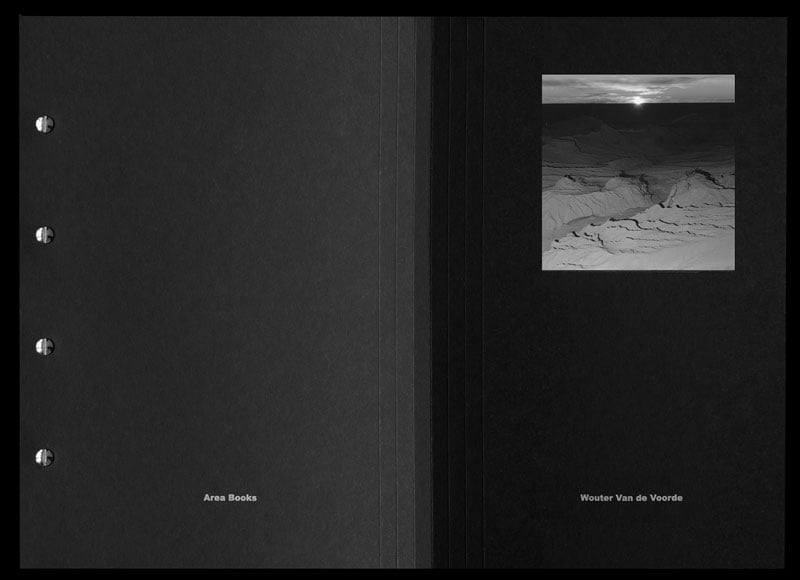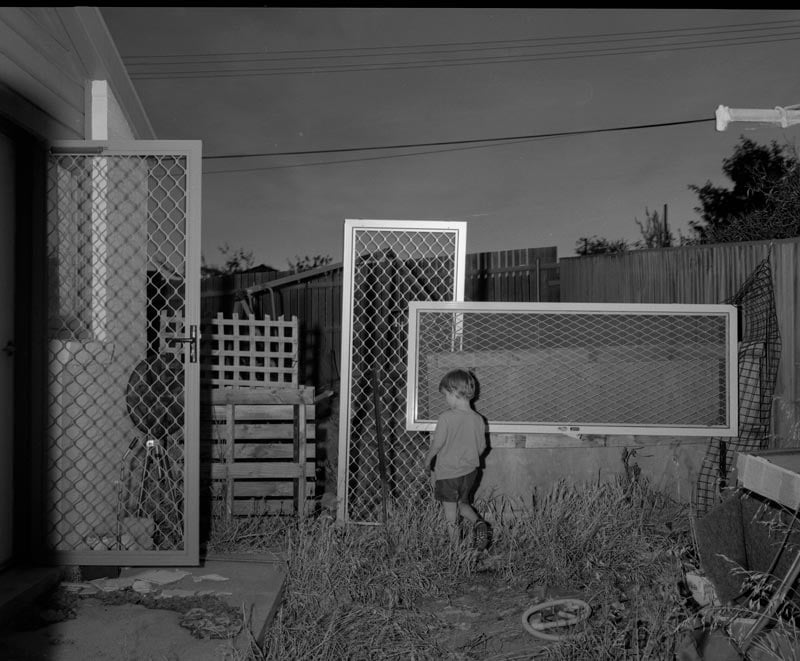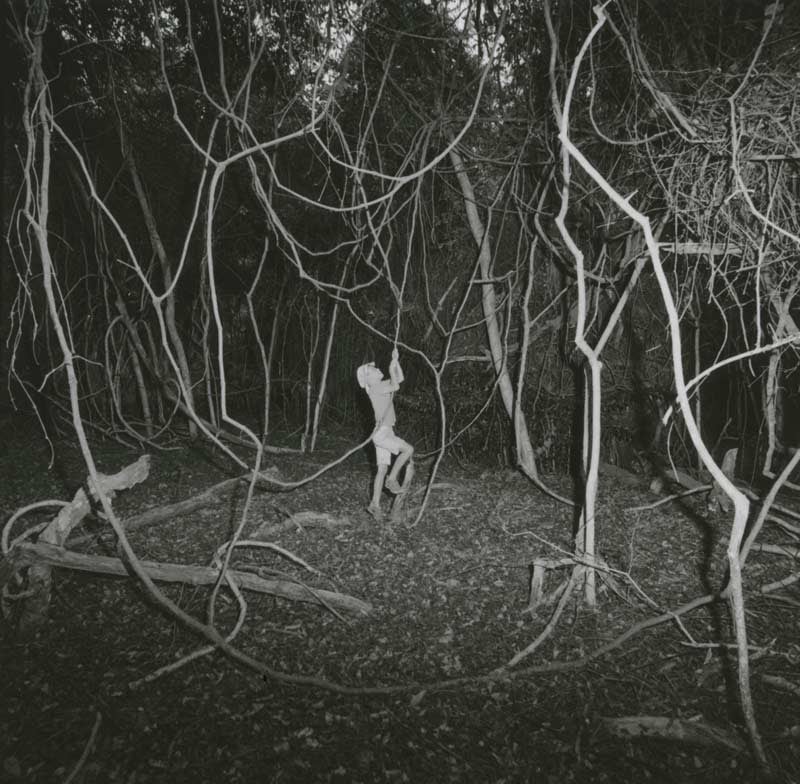In this post, we look at a book that focuses on those in-between places, the fringes where town becomes country. In this example that country is Australia, and the photographer is Wouter Van de Voorde. His book, Nucleo, tells the story of the life he leads with his family on the fringes of the bush. It’s a book that, with its double binding and use of studs on the back cover, is an object that reflects the two worlds that Van de Voorde lives in.

Image 1: Front cover of Nucleo by Wouter Van de Voorde
Nucleo tells a story of crumbling rockfaces and shimmering trees, of night-time walks along dusty trails, of rough-hewn back yards and shanty-town sheds. It tells the story of Van de Voorde and his family, of Felix, Flora and Celia, and their wanderings along the tracks and down the gullies of the bush around their South Australian home.
It’s a book where the freedom of meandering through the landscape is traced by the tyre tracks and footprints of those who pass through, where backyard detritus of climbing frames and home-made karts melds with the architecture of domestic supply; power lines and pylons, telegraph poles and perimeter fencing.

Image 2: A child walks through an outdoor area with a backdrop of a makeshift fence of garden trellis, discarded door screens, and wooden pallets
There are collapsed sheds and circles of mesh, old barrels, discarded door screens, bits of wood held together by string, and line upon line of garden fencing in various states of disrepair. Things fall apart, and in Nucleo that happens both in the garden and in the bush.

Image 3: A child stands in a field at night with dirt tracks fading into the distance
There are two sections to the book, one made up of earlier colour work. That’s at the back of the book, and the low-contrast black and white work at the front of the book.
The book itself is bound two ways, one using studs on the right side of the book, making for a long landscape format. These pages have then been folded over to make a portrait version of the book. Open it up and you get two options to view; the first, and most intuitive way, is the viewing across the fold. The other is to pull the fold up and start viewing from the stud-bound back.

Image 4: An Australian farm landscape with bush fires in the distance
The nature here has a worn-out feeling, the black and white creeks hemmed in by piles of dusty soil framed by spikes of grass and fallen branches. Felix and Flora skip between these bush hazards, reaching and climbing, pointing and looking.

Image 5: Two children walk in the dusty Australian bush
Shale outcrops crumble into the dust and the feeling is very much of being on the surface of a planet, even more so when the signs of human habitation and a nearby town come into view. This is settled country, colonised country ‘created on the unceded lands of the Indigenous Ngungawal People’ and that feeling is to the fore in the book.

Image 6: A child swings on a dangling branch, surrounded by more branches of its kind
Where the first half of Van de Voorde’s book is more on the Mad Max spectrum, a world where things are coming apart at the seams, the full-bleed colour images show a more lyrical Australia, one that is both immense and beautiful.
But the relief is temporary, this is the surface of a planet we are talking about, where beings struggle to breathe and live, a world that is both open and suffocating, that is wild but tamed, a land for us to spoil and poison with our presence, to delight in and wonder at in our roamings. It’s all those things.

Image 7: A child and woman stand in a dusty dirt landscape with a barbed wire fence and a rusted metal structure
Belgian photographer Wouter Van de Voorde started out as a painter in his homeland before discovering that photography offered him more of the creative freedom and opportunity for introspection than his original medium. Since taking up photography he’s exiled himself to Australia where he uses his outsider status as a driver for creative expression, exploring the quirks and nuances of Australian culture and landscape in the hope of creating a sense of belonging through his work.
.webp)
 Colin Pantall is a photographer, writer and lecturer and teaches on the
Colin Pantall is a photographer, writer and lecturer and teaches on the 



